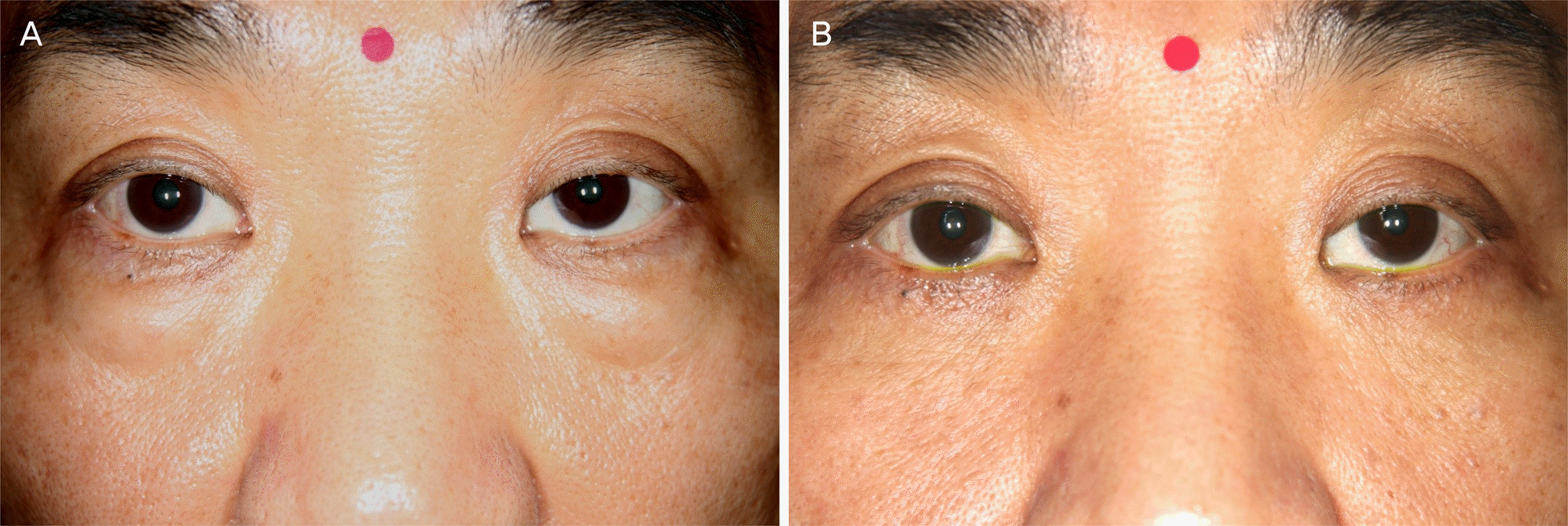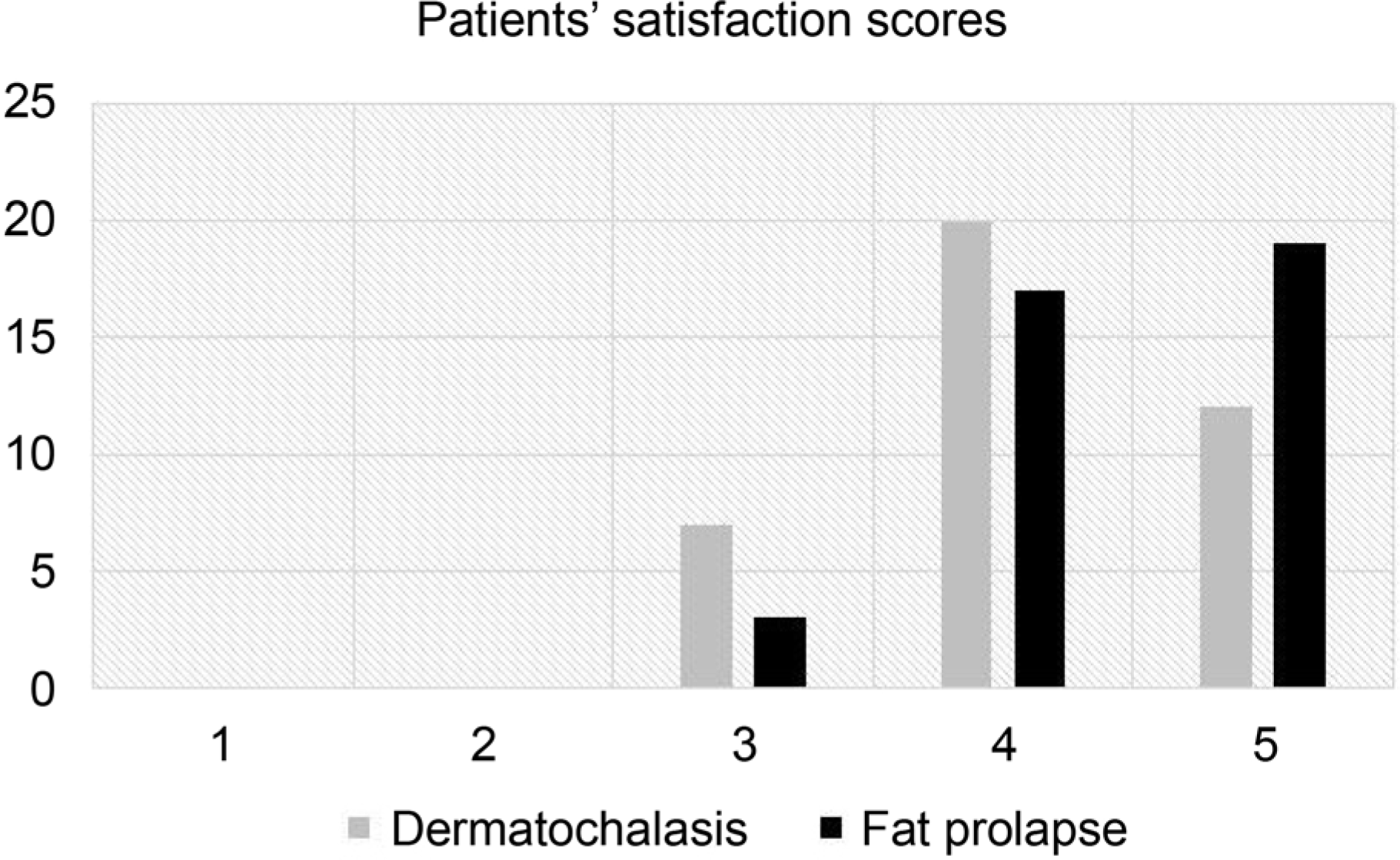Abstract
Purpose
The purpose of this study was to investigate the effect of transconjunctival approach lower blepharoplasty combined with pinch skin excision technique in elderly patients over 60-years-old.
Methods
The study included 39 patients (16 male patients, 23 female patients) over 60 years of age and over a six-month of fol-low-up period who had undergone transconjunctival approach lower blepharoplasty combined with pinch skin excision technique. All included patient's medical record were reviewed for success rate of operation, recurrence rate, postoperative complication occurrence and the degree of patients'satisfaction.
Results
The success rate of surgery during the mean follow-up period of 6.3 months was 97% among total of 39 patients. There were five cases of reported complications; 3 patients with ectropion in which 1 of 3 patients underwent tarsal strip operation for the correction of ectropion, 2 with chemosis. All patients were satisfied with the final results; Average satisfaction score of 4.26.
Conclusions
The transconjunctival approach lower blepharoplasty combined with pinch skin excision technique in elderly patients had high success rates and patient satisfaction scores. Elderly patients with prominent lower eyelid fat with skin excess will satisfy with this technique for low complication rates and high cosmetic satisfaction.
References
1. Chi MJ, Park MS, Beak SH. The effect of transconjunctival lower blepharoplasty combined with pinch skin excision technique. J Korean Ophthalmol Soc. 2007; 48:755–60.
2. Sung Y, Park J, Lew H. Changes in lower eyelid positions after in-dividualized lower blepharoplasty. J Korean Ophthalmol Soc. 2015; 56:1831–9.

3. Bourguet J. Fat herniation of the orbit: our surgical treatment. Bull Acad Med (Paris). 1924; 92:1270–2.
4. Garcia R, McCollough G. Transcutaneous lower eyelid abdominal with fat excision: a shift-resisting paradigm. Arch Facial Plast Surg. 2006; 8:374–80.
5. Hashem AM, Couto RA, Waltzman JT, et al. Evidence-based abdominal: a graded approach to lower lid blepharoplasty. Plast Reconstr Surg. 2017; 139:139e–50e.
6. Jacono AA, Moskowitz B. Transconjunctival versus transcutaneous approach in upper and lower blepharoplasty. Facial Plast Surg. 2001; 17:21–8.

7. Kim E, Bucky L. Power of the pinch: pinch lower lid blepharoplasty. Ann Plast Surg. 2008; 60:532–7.
8. Taban M, Taban M, Perry JD. Lower eyelid position after abdominal lower blepharoplasty with versus without a skin pinch. Ophthalmic Plast Reconstr Surg. 2008; 24:7–9.
9. Mathes SJ, Hentz VR. Plastic surgery. 2ne ed.Vol. 2. Philadelphia: Elsevier;2006. p. 200–3.
10. Korchia D, Braccini F, Paris J, Thomassin J. Transconjunctival abdominal in lower eyelid blepharoplasty. Can J Plast Surg. 2003; 11:166–70.




 PDF
PDF ePub
ePub Citation
Citation Print
Print




 XML Download
XML Download